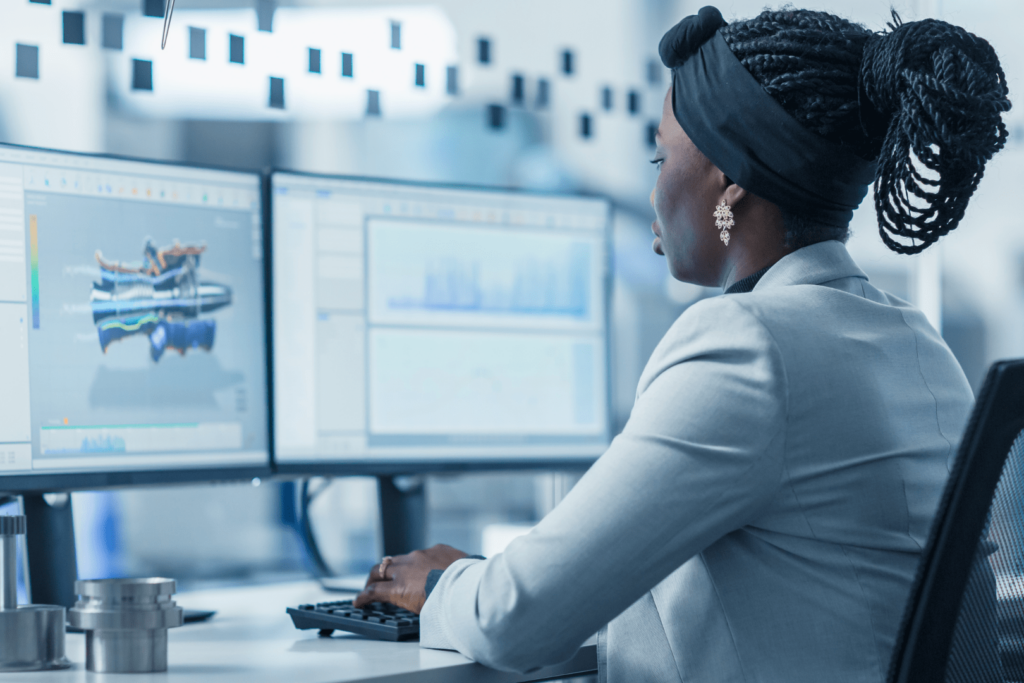Sentient Architecture: Revolutionising Employee Wellbeing in the Workplace

Sentient architecture is an innovative concept that transforms buildings into intelligent, responsive environments. By incorporating embedded technology such as sensors, wearables, and IoT devices, these spaces can sense, think and adapt in real time to optimise comfort, productivity and, most importantly, employee wellbeing. This emerging field is poised to reshape workplaces, offering environments that are attuned to the physical and emotional needs of employees, thereby contributing to their health, performance, and satisfaction.
The Impact of Sentient Architecture on Employee Wellbeing
1. Creating Health-Centric Work Environments The concept of healthy buildings is central to sentient architecture. Today’s workplace designs focus on optimising elements such as air quality, natural light and acoustics, all of which significantly impact employee wellbeing. Sentient buildings take this further by utilising technology to adjust these elements automatically. For example, air quality can be monitored and adjusted based on occupancy levels, while lighting can be optimised to align with circadian rhythms. These real-time adjustments ensure that employees’ physical environments support their health, thereby reducing stress and fatigue and enhancing overall wellbeing.
2. The Link Between Wellbeing and Productivity Increasingly, organisations recognise the strong connection between employee wellbeing and productivity. A growing body of research shows that healthy, well-designed environments lead to lower absenteeism, fewer healthcare costs and better overall performance. Sentient architecture enhances this relationship by providing real-time, personalised wellbeing support. For instance, sensors embedded in the building can detect when an employee is stressed and adjust the lighting, temperature or even the noise levels to create a more comfortable and calming atmosphere. This level of personalisation allows employees to feel supported in maintaining their physical and mental wellbeing throughout the workday.
3. Wearable Technology and Wellbeing Integration Wearable devices, such as smartwatches and fitness trackers, are increasingly being integrated into the workplace, providing valuable insights into employees’ health and activity levels. Sentient architecture uses this data to adjust the work environment to better suit the needs of employees. For example, if an employee’s wearable device indicates that they are stressed or fatigued, the building could automatically adjust the lighting or sound levels to create a more relaxed atmosphere. These personalised adjustments foster a culture of wellbeing, allowing employees to perform at their best while feeling supported by their surroundings.
4. Enhancing Employee Wellbeing with Human-Building Interaction (HBI) HBI is an emerging field that studies how buildings can adapt to human needs, preferences and behaviours. Sentient architecture takes HBI principles a step further by creating a feedback loop between the building and its occupants. Using data collected from sensors and wearables, the building can learn and predict what adjustments need to be made to support an employee’s wellbeing. For instance, if an employee is working late and needs more light or a quieter environment, the system can make these changes autonomously. By responding to the specific needs of each individual, sentient architecture fosters an environment where employees can thrive.

5. The Role of AI and IoT in Employee Wellbeing The integration of AI and IoT into workplace systems enables real-time monitoring and adjustment of the built environment. AI algorithms can process data from sensors embedded in the building to predict and respond to employees’ needs, such as adjusting temperature or lighting based on the time of day or an employee’s activities. These intelligent adjustments not only optimise comfort but also contribute to employee wellbeing by ensuring that the environment remains conducive to focus, relaxation and overall health.
Real-World Applications of Sentient Architecture for Wellbeing
Companies are already integrating aspects of sentient architecture to improve employee wellbeing. For example, platforms like Schneider Electric’s EcoStruxure Building and Enlightened’s IoT sensors help optimise the office environment, providing personalised experiences for employees. These systems collect data on lighting, temperature and air quality, automatically adjusting them based on real-time conditions to enhance wellbeing. Similarly, ARUP’s BREO system uses real-time data to communicate energy usage and environmental conditions, empowering employees to engage with their surroundings and make choices that improve both their personal wellbeing and the building’s performance.
The Future of Wellbeing-Centric Workplaces
Sentient architecture represents a shift toward more employee-centric workplaces. By leveraging technology to create adaptive, health-focused environments, organisations can offer spaces that not only optimise productivity but also prioritise employee wellbeing. This focus on wellbeing is crucial in today’s competitive job market, where employees are increasingly seeking workplaces that support their physical, mental, and emotional health.
As the demand for healthier, more supportive work environments grows, sentient architecture will play a key role in shaping the future of work. It offers organisations a powerful tool for improving employee satisfaction, retention and overall wellbeing. However, as with any technology, privacy and ethical concerns need to be addressed. Ensuring that employees have control over their personal data and that systems are designed to accommodate diverse needs will be essential for the widespread adoption of sentient architecture.
In conclusion, sentient architecture is more than just a trend—it is the future of employee wellbeing in the workplace. By integrating smart technologies that adapt to individual needs, sentient buildings create environments where employees can thrive, enhancing employee health and happiness, and contributing to greater organisational success.



